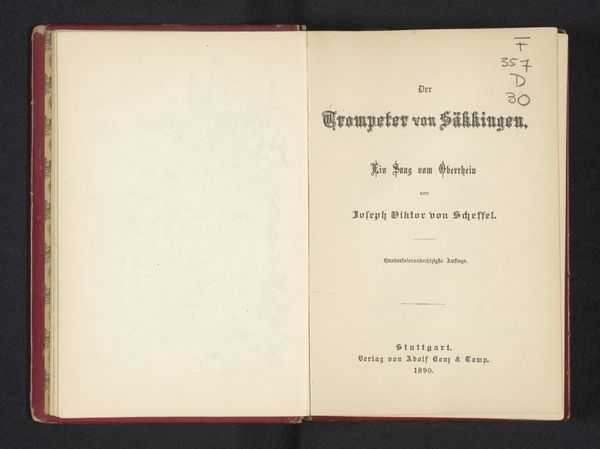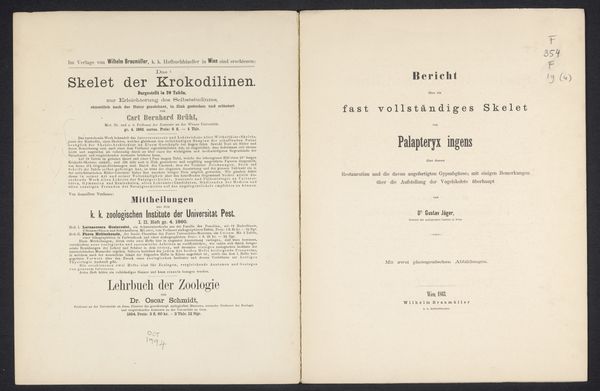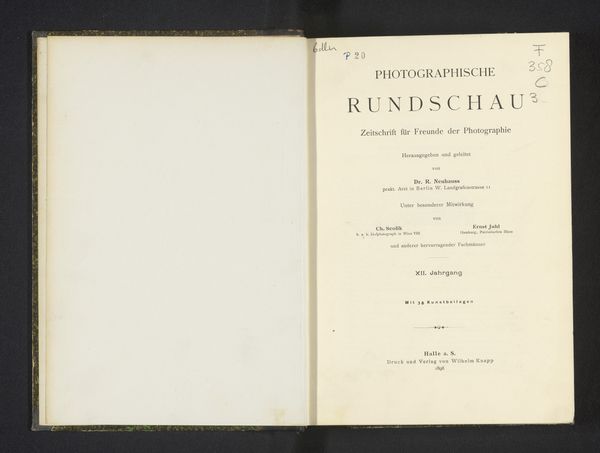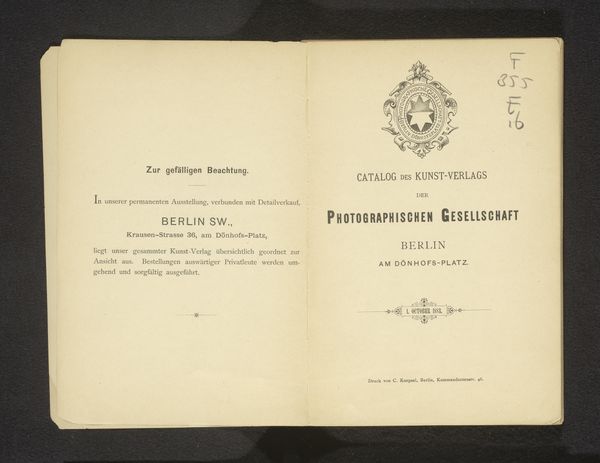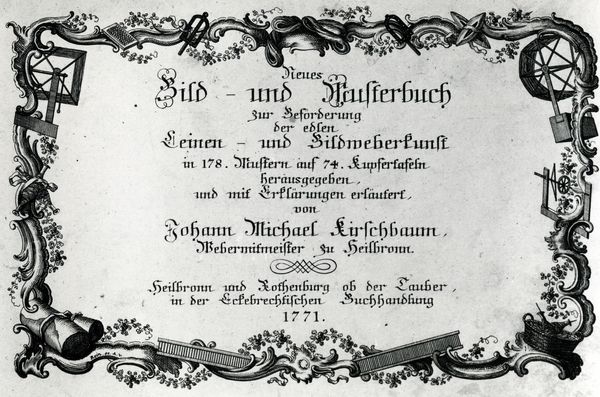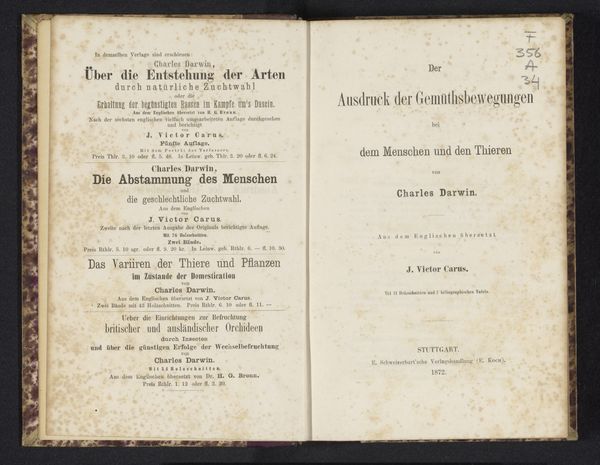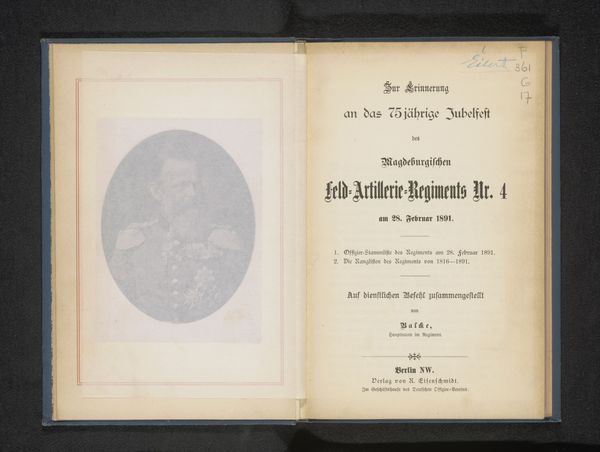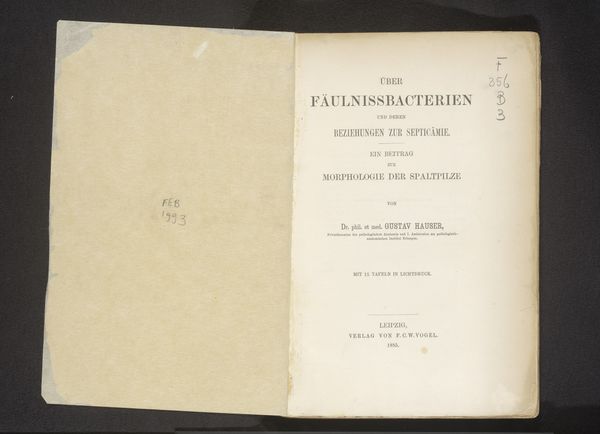
graphic-art, print, textile, typography, poster
#
graphic-art
# print
#
textile
#
typography
#
romanticism
#
poster
Dimensions: height 248 mm, width 172 mm, width 344 mm
Copyright: Rijks Museum: Open Domain
This cover for six prints depicting landscapes in Schleswig-Holstein was made in 1847 by Georg Michael Kurz. It's a lithograph, which means it was printed from a flat stone surface, using the repellant properties of grease and water. The design is striking, the crisp black lettering and ornamental border set against the pale paper. This wasn't just a quick reproduction, but a laborious, skilled act. The lithographic process involves meticulous hand-drawing on the stone, treating it chemically, and then running it through a press. Each print would require careful inking and registration, reflecting a significant investment of time and labor. The cover itself provides a glimpse into the world of 19th-century print culture, the commodification of art, and landscape through printed images. It challenges us to consider the labor and expertise involved in creating even seemingly simple printed matter. By acknowledging these elements, we gain a deeper understanding of its cultural and social significance.
Comments
No comments
Be the first to comment and join the conversation on the ultimate creative platform.



